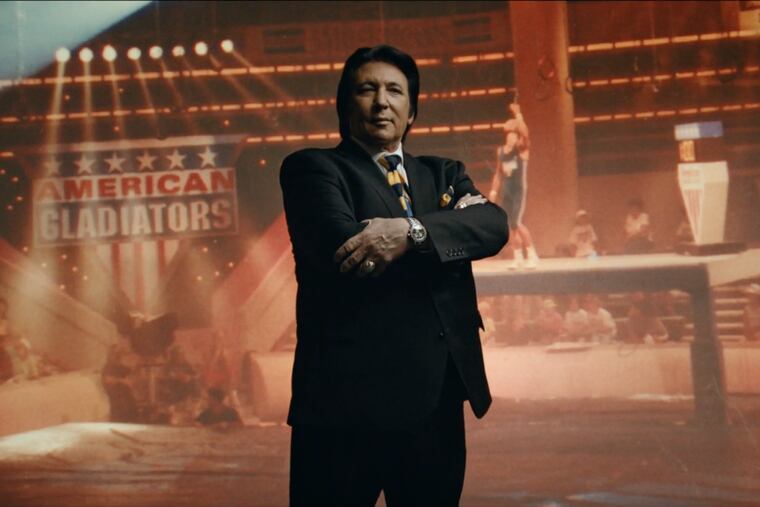A Pa. union annual picnic sport inspired ‘American Gladiators.’ Hollywood first used the TV show during a writers’ strike.
The Pennsylvania Iron Workers Local in Erie Pa. inspired the show that was first commissioned for TV during a 1988 writers’ strike. It was revived in 2008 during another strike.

Any child of the ‘90s remembers American Gladiators. The syndicated Saturday TV staple pitted amateur hopefuls against a fleet of modern colossuses with names like Nitro, Lazer, Zap, and Malibu.
But before the games became a culture-wide and global phenomenon, there was the humbler, more regional version.
It goes back to annual picnics organized by the Pennsylvania Iron Workers local in Erie.
In the gymnasium of a local high school, blue-collar workers would joust with padded broomsticks, scramble for loose volleyballs, and perform other feats of burly athleticism, in what Sports Illustrated once called a “Rust Belt rethinking of the coliseum spectacles of ancient Rome.”
It also served as proof-of-concept for the wildly popular TV version.
The modern gladiatorial games were adapted to the small screen by two local characters: a tough guy arm wrestling champ named Dan Carr and a smooth-talking Elvis impersonator named Johnny Ferraro.
As a new documentary in ESPN’s 30 for 30 series tells us, American Gladiators, as we know it, failed its proud, working-class history. It was a show built on the back of deception, exploitation, and out-and-out scabism.
In Ben Berman’s American Gladiators documentary (neatly titled The American Gladiators Documentary), Ferraro, with his jet black pompadour and mile-wide neckties, cuts a vaguely intimidating figure.
He’s a well-off entertainment entrepreneur, whose relatively lavish lifestyle seems to come at the expense of the program’s other stars. Many of the athletes on camera live modest — even broken — lives, speaking openly about their bad contracts and debilitating injuries suffered on the job. (“These games,” one ex-Gladiator attests, “were not safe for humans to play.”)
The program was originally commissioned for television in 1988, when a union-wide writers’ strike sent producers scrambling to devise alternatives to scripted entertainment. Its short-lived 2008 revival also, consciously, corresponded with another Writers’ Guild of America strike.
It is a union-created show used when Hollywood needs to undermine unions. With the WGA on strike again, could a revival be near?
“The amount of times the word exploitation left our mouths when we were making this documentary were, well, you couldn’t even count,” says Berman. “I think it’s inherent to the story. There’s a hierarchy of sorts, and each level exploits the other. … That’s the American way.”
At the top of this hierarchy is Ferraro. He is a vaguely “Trumpian” figure, styling himself as a (rather tacky) embodiment of the win-at-all-costs logic of American capitalism. But in the process of a film being made about him, something in Ferraro seems to shift.
“With Johnny,” Berman explains, “there’s a lot of conflict in his past, with certain individuals. And I think there’s some internal conflict regarding regret, which he expressed in the documentary.”
As Berman’s film progresses, Ferraro struggles to exert his control over its narrative, and Berman struggles back to tell a story he regards as truthful. They’re like two of those Saturday afternoon warriors, going shot for shot with foam-wrapped jousting rods.
Berman, a Temple University film grad and Allentown native, is no stranger to these sorts of unruly meta-narratives, which see him pulled into the action of his own films.
In an effort to excavate the true story, the documentary travels to Erie: to the local gym where the games began and to the homes and workplaces of figures who were sidelined, as Ferraro seized control of the franchise.
More than a nostalgia piece about an old TV show, Berman has crafted a thoughtful film that goes a long way in returning American Gladiators — in all its excitement, ingenuity, and excess— to its working-class Pennsylvania roots.
“The American Gladiators Documentary” premieres May 30 and 31 on ESPN and will be available on ESPN+ immediately after its debut.